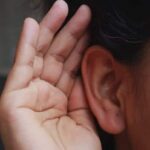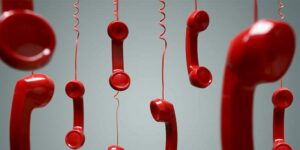Selective Listening explained

Selective Listening: This article explains selective listening in a practical way. Next to what is selective Listening, this article also highlights examples, the relationship with brain activity, selective hearing in children and adults, if it’s a an abnormality or disorder, selective listening in psychology and a short summary. Enjoy reading!
What is Selective Listening?
Many people are familiar with the concept of selective listening when it comes to people hearing only what they want to hear. “Selective hearing” is often mentioned in jest, but it is a concept that has only recently been fully understood by researchers.
This form of listening is referred to in research as selective auditory attention, but this listening style is also known as selective hearing or selective listening.
When people use selective listening, all of the sound is absorbed by the human auditory system, but only part of it is processed by the brain. The auditory attention is usually only focused on what people are genuinely interested in. It is therefore not a physiological concept, but purely the ability of humans to block out sounds and noise.
Definition of selective listening
Selective hearing in everyday life is a person’s ability not to hear something, or to listen to a single person in a crowded or loud environment. In the latter case, it concerns selective auditory attention, or the cocktail party effect.
Selective auditory attention has been defined by researchers Krans, Isbell, Giuliano, and Neville as the ability to acknowledge certain stimuli while simultaneously ignoring other stimuli.
Selective listening examples
An example given in the aforementioned study involves a student who focuses on the teacher and ignores the noises of his classmates in a noisy classroom.
The above is an example of a bottleneck block. This means that the information cannot be processed simultaneously with noise.
Therefore, only a small portion goes through for processing in the brain. The brain is unable to process all stimuli, so only the most relevant and important information is thoroughly processed by the brain.
Different models understand and theorize this process, such as the early selection model, the late selection model and the attenuation theory.
Selective listening is characterized by the following:
- Multi-tasking: less attention is then given to listening
- Skimming: which info is used and which is ignored is determined
- Setting priorities
- Summarizing
Selective hearing in children and adults
In addition to the example above, small children are often used in examples of situations where selective hearing occurs. Small children sometimes seem to understand sentences only when they contain “ice cream” or “candy”.
This has nothing to do with hearing acuity, it happens because of the brain prioritizing different sounds. Men are often accused of selective hearing, but it doesn’t seem to occur less with women.
Selective hearing is indispensable in adult life. Multiple sounds flood in almost every day. The news is on, the birds are chirping, the highway makes noise, the coffee pot is bubbling, the toilet is flushed and the shower is monitored to make sure the kids get to school on time. Despite all this, you still hear the announcement on the radio of the traffic jam that has arisen on the way to work.
Selective Listening and Brain activity
Several studies, conducted in 2008 and 2012, show that the sounds processed by the brain do not reflect all sounds from the outside world.
Concrete data exposed the auditory selective system. Researchers also found that they could predict which sounds would be ignored by participants in their study.
Using data sets and decoding techniques, the researchers reconstructed what participants heard. The patterns indicated that participants paid their attention only to what they needed to focus on.
Is Selective Listening an abnormality or disorder?
The definition of selective listening as discussed in this article has no similarities with a medical diagnosis. Selective listening, or selective hearing, is not known to have any physiological or psychological origin.
The World Health Organization (WHO) states on their website that a hearing impairment only occurs when there is complete hearing loss in the auditory system. Technically, selectiveness is not deafness, but rather selectivity of a person to pay attention to a particular source of auditory input.
Selective listening should therefore not be confused with a physiological disorder. Selective auditory attention is a normal process that occurs in the brain.
However, there may be disorders associated with this concept, such as hyperactive attention disorders, post-traumatic stress disorder, schizophrenia, selective mutism and other processing disorders.
Listening Skills Course: The Ultimate Workplace Soft Skills
Increase your Listening Skills to Advance Your Career
Selective listening in psychology
Psychologists explain selective listening, or the cocktail party effect, as an impressive and underappreciated ability to focus attention on just 1 voice out of a crowd.
An early study was conducted by cognitive scientist Colin Cherry. He used a simple method in which he played two different messages to people at the same time, under different circumstances.
He discovered how well humans are able to filter what is heard and how humans therefore overcome the cocktail party problem.
Which activities van help you to improve selective listening skills
As discussed, selective listening is very useful and it happens to everyone from time to time. That is more of a blessing than a curse. Still, some people seek treatment for selective listening.
They sometimes experience it as a problem. In many cases it is advisable to work on listening skills. There are a number of things you can do to improve these skills. Examples are:
Pay attention
When you are talking to someone, try to listen only to what they are saying. Try to pick up on as many visual cues that they show through their body language or facial expressions.
Summarize
As often as possible, try to summarize the main points at the end of a good conversation. This shows that you have listened carefully to the other person and it offers the opportunity to clarify unclear matters.
Avoid prejudice
This is easier said than done, but try to be aware of prejudices and judgments about people you talk to. Prejudice affects the way the brain processes a conversation. So think about this.
Ask questions
Ask the person you are talking to if there is something that is unclear. This also shows that you take the conversation seriously. In addition, taking a few seconds to clear something up is often less intensive than clearing up a misunderstanding at a later time.
Summary
Selective listening refers to people’s ability to hear only what they are focusing on. This is also known as selective auditory attention, or simply the cocktail party effect.
Another comparison often drawn is a highlighter. Students mark the most important bits of information in a textbook, thus ignoring the rest of the information. This ensures that they are not distracted by redundant information.
This type of listening is not a medical condition and is mainly a blessing in most situations. Selectivity in which information must be processed by the brain ensures that people do not receive too many stimuli to process.
Yet it can happen that people too often don’t pay attention, or use too much of this type of listening. In that case, it is advisable to improve your listening skills. Tips for this are: paying attention, summarizing, avoiding prejudice and asking questions.
It’s Your Turn
What do you think? Do you recognize the explanation about selective listening? Do you often use selective listening in your daily life? Do you think it is possible to train selective hearing? Which other types of listening do you often apply? Do you have any tips or comments?
Share your experience and knowledge in the comments box below.
More information
- Brown, G. (2008). Selective listening. System, 36(1), 10-21.
- Treisman, A. M. (1960). Contextual cues in selective listening. Quarterly Journal of Experimental Psychology, 12(4), 242-248.
- Treisman, A. M. (1964). The effect of irrelevant material on the efficiency of selective listening. The American Journal of Psychology, 77(4), 533-546.
- Maccoby, E. E., & Konrad, K. W. (1966). Age trends in selective listening. Journal of experimental child psychology, 3(2), 113-122.
How to cite this article:
Janse, B. (2022). Selective Listening. Retrieved [insert date] from Toolshero: https://www.toolshero.com/communication-methods/selective-listening/
Original publication date: 01/03/2022 | Last update: 12/17/2023
Add a link to this page on your website:
<a href=”https://www.toolshero.com/communication-methods/selective-listening/”>Toolshero: Selective Listening</a>












